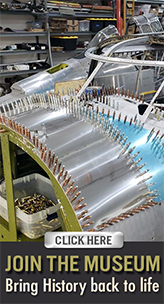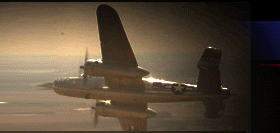
On March 20, 1945, B-25J 43-27537 ship 8Z was part of a three-ship formation to suppress the German Flak gun positions protecting the Campo North railroad bridges. The six man crew flying in 8Z that day were Pilot - 2nd Lt. James E. Jacobs, Copilot - 2nd Lt. Hardy D. Narron, Top Turret Gunner/Flight Engineer - S/Sgt Medard R. Tafoya, Bombardier - 1st Lt. George W. Hammond, Radio/Gunner - S/Sgt Jack B. Willingham and Tail Gunner - S/Sgt Melvin E. Kelley .
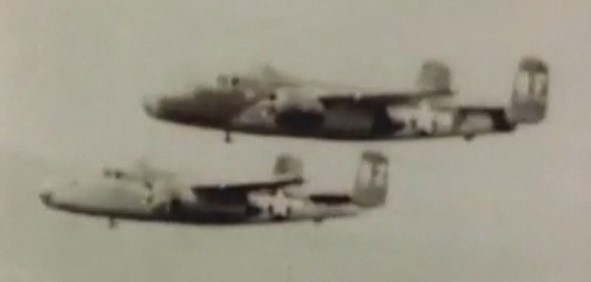
The Flak suppression flight required these three planes to break off from the main group two minutes before the bomb run would start. They would first drop chaff, to disrupt the radar used to aim the Flak guns followed by M47 Phosphorus bombs with fuses set for airbursts. This caused the Germans to head for cover until the Phosphorus had landed and burned out. In this scenario, by the time the Germans returned to their Flak guns, the bombing run would be complete. Knowing this, the Germans knew the three aircraft that broke off from the main flight were heading for them and they concentrated their fire on them. Ship 8Z took a direct hit in its starboard engine, forcing the crew to feather its propeller. Because of this, it caused 8Z to drop out of formation.
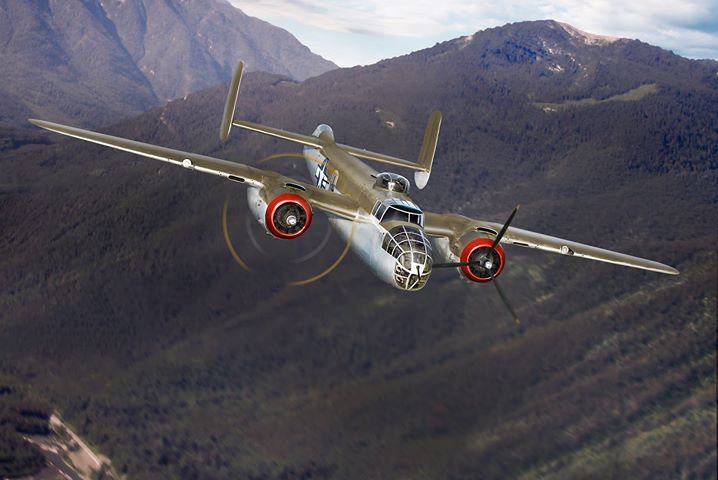
A B-25, without bombs, can fly on one engine but can only maintain an altitude of 6,500 feet at best. The crew of 8Z knew the mountains around them were higher than their B-25 could fly over on one engine. Three days prior to the 8Z mission, one of the most experienced pilots in the group was lucky to find a pass low enough and was able to return to Corsica, their home base, after losing an engine in the Brenner Pass.
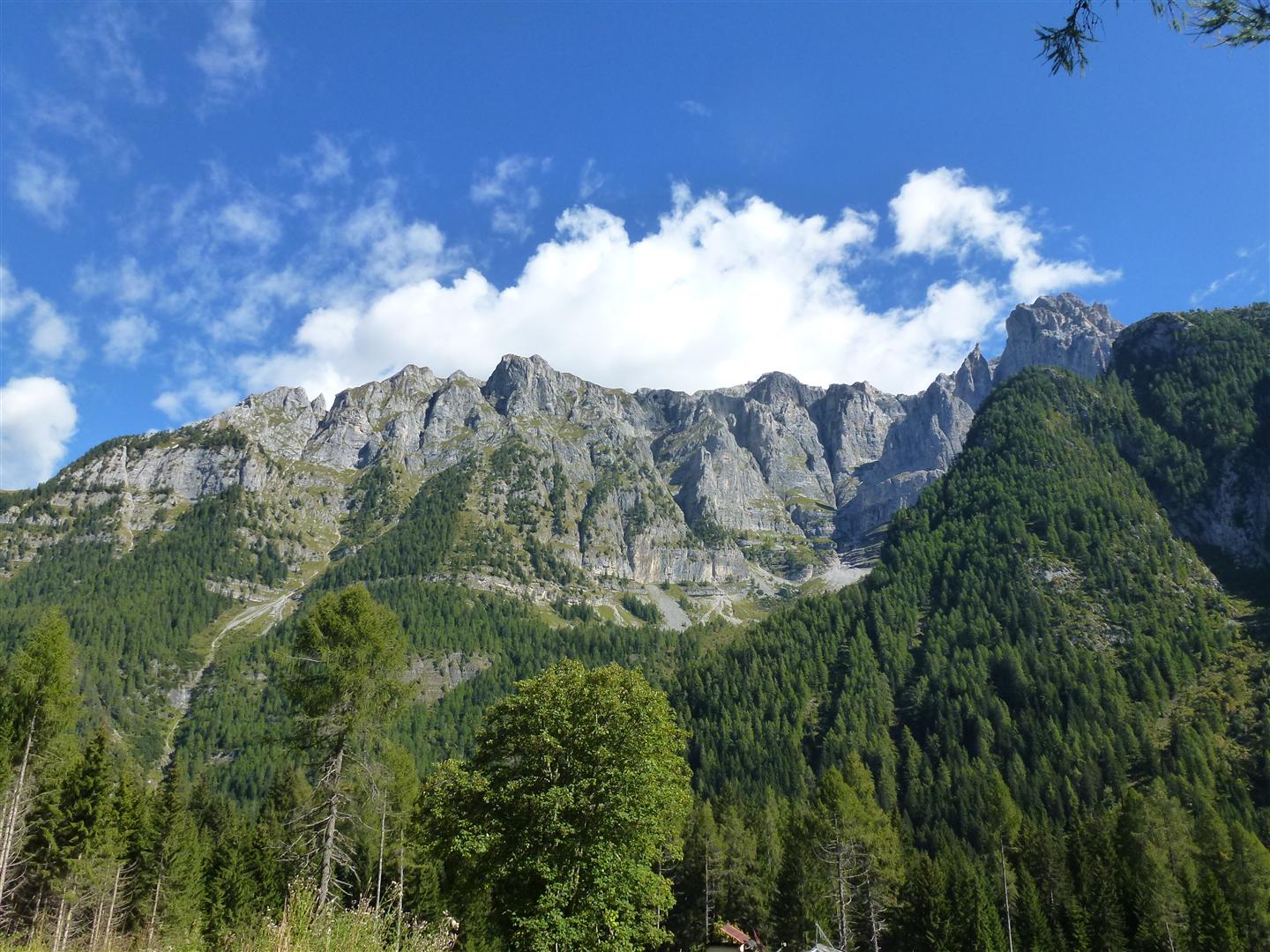
The crew of 8Z radioed that they were bailing out. They had flown south from Campo for about 50 miles into the Valley of the Sun and then turned into the Rabbi Valley where the crew dropped their remaining five Phosphorus bombs (The M-47 Phosphorus bomb weighed 97 pounds) into the woods away from the locals. They managed to turn around and head back to the Valley of the Sun some 3 kilometers from where they dropped their remaining bombs. Three crew members bailed out into the Rabbi Valley (Kelley, Willingham, Hammond) and the remaining three crewmen (Tafoya, Narron and then Jacobs) bailed out while crossing the Valley of the Sun and watched 8Z crash into the side of a mountain.
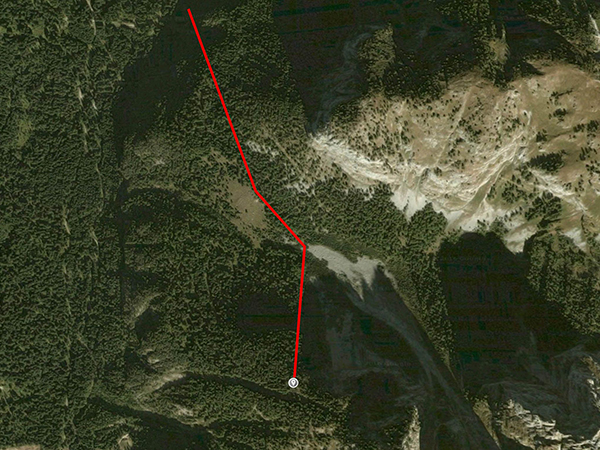
Once on the ground, the crew of 8Z were quickly captured by the Germans and put in jail in Male’, Italy and held there until later being transported to the Gestapo holding cells at Bolzano concentration camp on March 23, 1945. The Germans had 4,000 soldiers looking for resistance fighters and OSS (Office of Strategic Services) agents in this area and the crew of 8Z landed in the middle of this German force searching for enemy combatants.
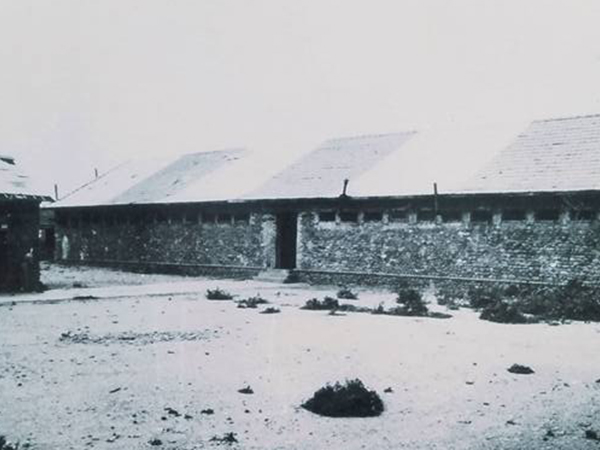
The book “The Brenner Assignment”, by Patrick K. O’Donnell, details the OSS operations in the Brenner Pass and mentions the fate of the 8Z crew. The Gestapo (SS) had orders to interrogate all persons who parachuted into German occupied territory to determine if they were aircrew or saboteurs. Saboteurs would be executed and aircrew sent to Luft Stalag VII.

The SS/Gestapo headquarters appears to have been located in the Italian Army Corps Building in Bolzano, Italy. SS-Sturmbannführer, August Schiffer, was in command of the local Gestapo and SS-Untersturmführer, Heinz Andergassen and SS-Oberscharführer, Albert Storz, were under Schiffer’s direct command. Interrogation of the pensioners was either held at the Gestapo headquarters or in their holding cells at the concentration camp.
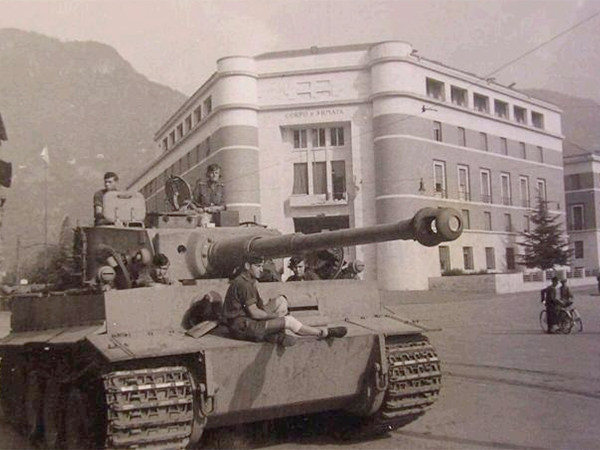
The interrogation of the 8Z crew took place on March 23, 1945, at the Bolzano Concentration Camp holding cells. The German officers beat the crewmembers to get information from them. The Gestapo was looking for information on American radar guided bombing techniques. It was here that Schiffer learned that three of the crewmembers from 8Z had been on at least 40 bombing missions. Narron and Hammond both were on their 41st mission and Tafoya on his 61st. Schiffer decided these three men, 2nd Lt. Hardy D. Narron, 1st Lt. George W. Hammond, and S/Sgt. Medardo R. Tafoya were selected for execution. The order was for them to shoot them “while they try to escape”. The next day, 2nd Lt. James E. Jacobs, S/Sgt Jack B. Willingham and S/Sgt Melvin E. Kelley were transported to the Stalag VIIA allied prisoner of war camp.
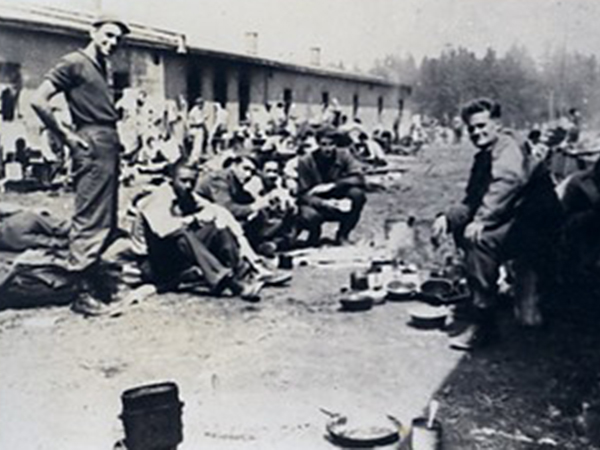
The remaining three crewmembers of 8Z climbed into a car under the pretense they were being transported to a prisoner camp on the edge of town near an aerodrome. On the way to the camp, the vehicle “conveniently” broke down. The three crew members were ordered to get out of the car, at this time they were shot “while trying to escape.” Two died at the scene and one was still alive. S/SGT Tafoya, wounded but alive, was taken back to the holding cells. He lived thru the next day, but was executed on March 26, 1945. The Germans took Narron, Hammond and Tafoya to the Cemetery of the Resurrection at Bolzano and buried them.
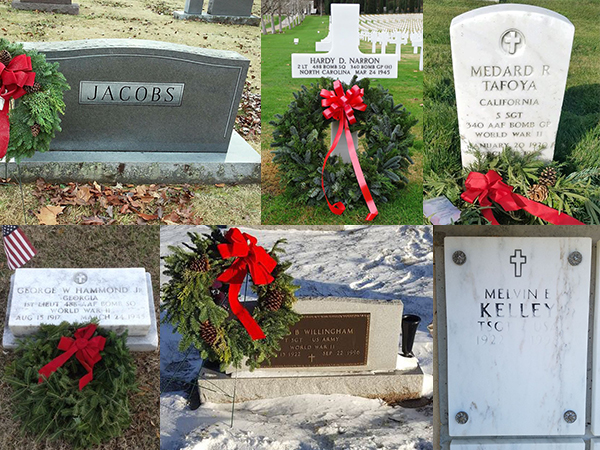
After World War II ended, War Crime Trials were held to try the Germans for their war crimes. As a result, it was determined that Schiffer, Andergassen and Storz were the ones who murdered several Allied POWs including the three crewmembers of 8Z. At the end of the trial, they were found guilty and sentenced to be hanged. The driver of the Gestapo’s car was sentenced to life in prison for his involvement. The bodies of the three murdered 8Z crewmembers were recovered and two were sent home to the States for burial and one was buried at the US ABMC cemetery in Florence, Italy.
The three SS officers were hanged on July 26, 1946, at the Peninsular Base section near Leghorn, Italy. The SS men were initially buried in the US Military Cemetery, at Castelfiorentino, but later moved in 1947 or so, to the German Military Cemetery at the Futa Pass.
Two other B-25s carried the tail code 8Z with the 488th. Very little is known about these two aircraft. The first 8Z was a B-25D-5 serial # 41-29994 that served its time and was replaced with a new B-25J after Mount Vesuvius erupted. On March 20th, 1945, 43-27537 was replaced by a new, natural metal, B-25J-10 serial # 43-35946 that survived the war and was flown back to the States by an unknown aircrew later to be scrapped.





